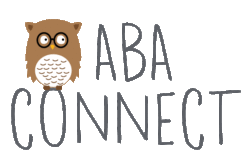Classifying Reinforcers
Unconditioned Reinforcer is also called a primary reinforcer. These are reinforcers that do not need to be learned, such as food, water, oxygen, warmth and sex. These are all primary drives that we have for basic survival and if they are deprived in any way, gaining access to these reinforcers is very motivating.
Conditioned Reinforcer is also called a secondary reinforcer. It is something that needs to be learned through pairings with unconditioned reinforcers. For example, money is a learned reinforcer. By itself, money is a useless piece of paper, but with the pairing of money and access to unconditioned reinforcers, money becomes a valuable thing.
Generalized Conditioned Reinforcer
Reinforcers can be classified by their attributes:
- Edible Reinforcer – Highly preferred food items. If you don’t like it, it wouldn’t serve as a reinforcer. It has to be yummy.
- Sensory Reinforcer – Anything that effects pleasure to the senses to the individual. Again, it has to be something that the person likes, otherwise, it is not going to be a reinforcer. This can include massage, music, or a beautiful painting.
- Tangible Reinforcer – Any tangible item that the person values. This can be money, stickers or tokens.
- Activity Reinforcer – The opportunity to have some fun. This is anything the person enjoys doing: going fishing, watching TV, jumping on a trampoline.
- Social Reinforcer – Any positive or desired attention or interaction with another person can serve to reinforce.
These reinforcer types remind me of the “5 Love Languages.” The premise behind the Love Language book is that people find different things reinforcing and they want to receive positives from others in different ways. The Love Languages are like Reinforcers in that everyone has different things that they find desirable and therefore reinforcing.
In order to find what is reinforcing to an individual, a preference assessment can be performed.




Thanks for the post!
What is a reinforcer?
For a methodological behaviorist, a reinforcer is any event virtual or real, that changes any characteristic of behavior, from rate to intensity to form.
For a radical or biological behaviorist, a reinforcer is a positive change in a specific neurologic state that reflects an affective tone or feeling.
The latter was proposed by the radical behaviorists John Donahoe and David Palmer in 1994, and was independently confirmed by the affective neuroscientist Kent Berridge in the same and following decades. Donahoe and Palmer proposed a neurologically grounded definition of reinforcement. Reinforcement reflected a discrepancy principle, when behavior is continually mediated by the activity of dopamine neurons or dopaminergic system elicited by continuous correction error between predictions and outcomes. Dopamine scales with the importance of the reinforcer, and is responsible for a feeling of energy and arousal, but not pleasure. The former principle is still the guiding principle of present-day behaviorists or behavior analysts, but discrepancy principles are now core to incentive motivation theories in affective neuroscience.
The dichotomy between both principles is stark in both principle and practice. Whereas a methodological behaviorist is concerned about the effectiveness of reinforcers, a radical behaviorist Is concerned about how reinforcement induces affect. To a teacher, parent, society, or politic, the effectiveness of reinforcement is paramount. However, for an individual, affect in reinforcement is of first importance. The latter is reflected in the recent work of Berridge, who emphasized that behavior change must be oriented to eliciting continuous positive affect, which is epitomized by an active and meaningful life. With this perspective, the metric for success for behaviorists is not societal control, but individual freedom, and a behaviorally engineered society that focuses on constructing the avenues that enrich the meaning or value of life, or a fully realized self-control in a free society.